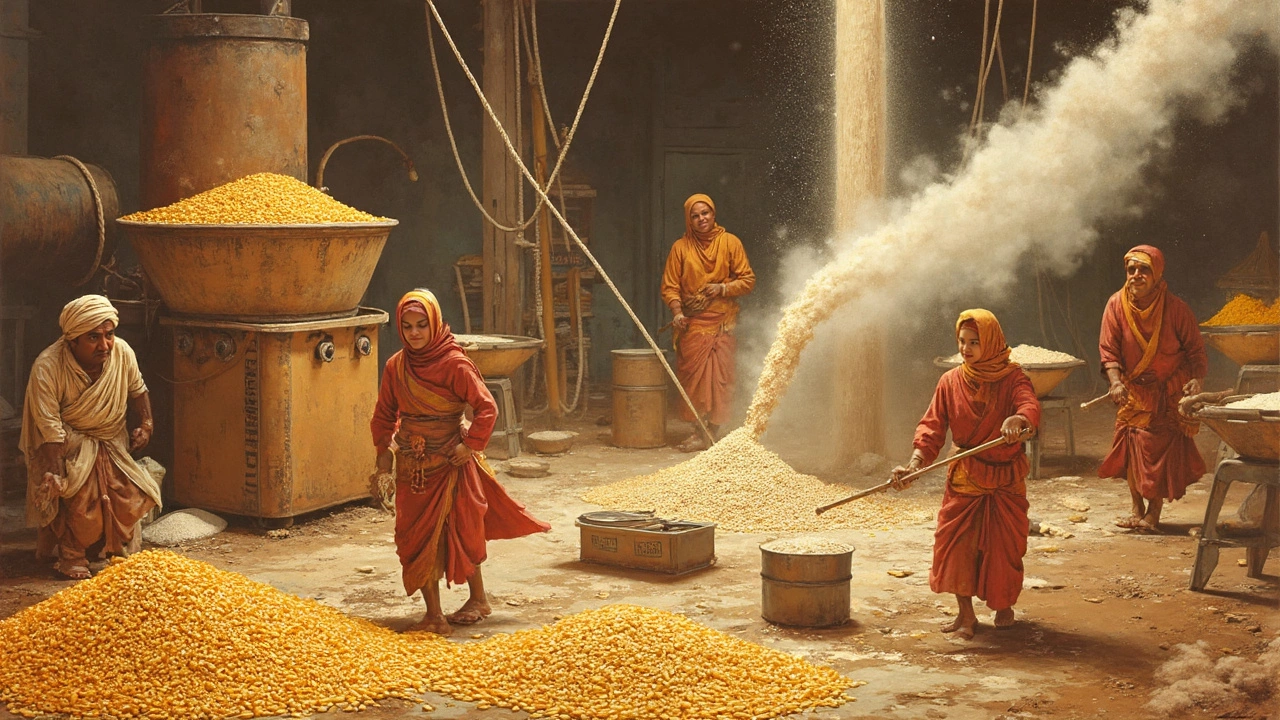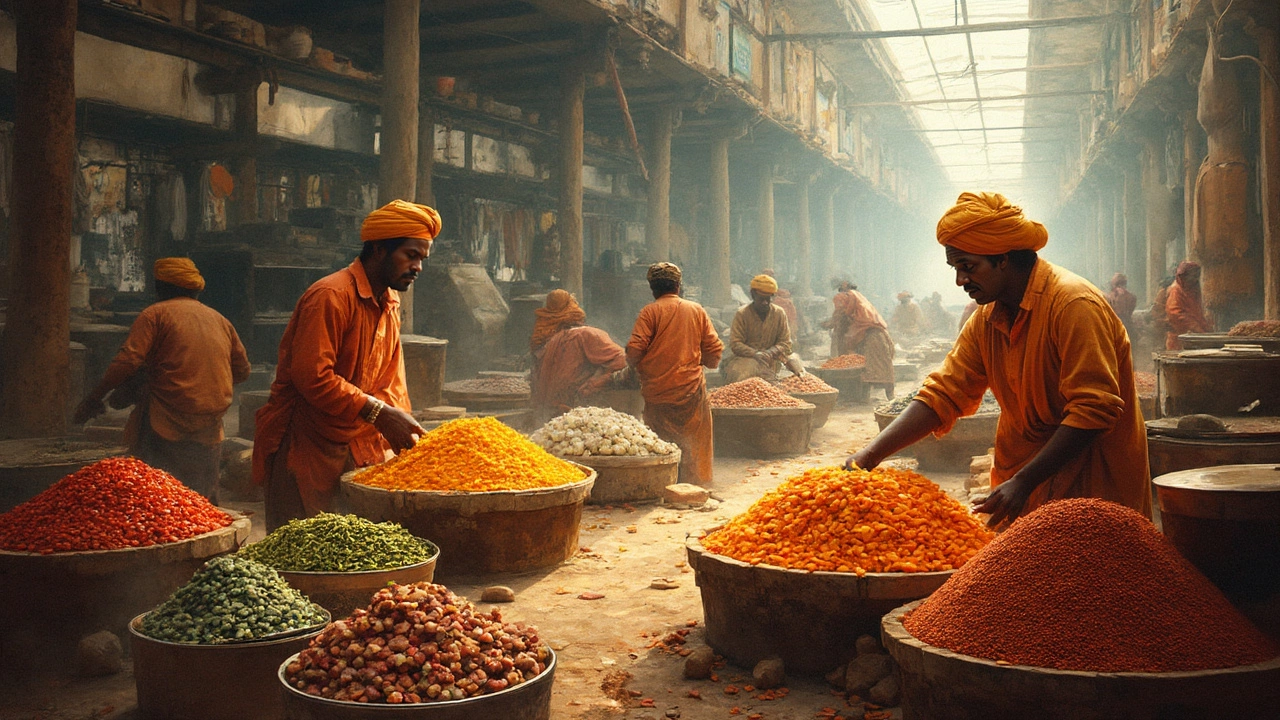You ever wondered what happens to your food before it lands on your plate? Well, it all starts with food processing units, which are like the backstage crew in the food industry. They're doing all the hard work of transforming raw ingredients into something we can actually eat.
Take for example a milling unit. It takes whole grains and grinds them into flour, ready for baking into bread or cakes. Sounds simple, right? But it's a crucial first step in making those delicious pastries. And that's just one type of unit among many, each playing a specific role in getting food from farm to fork.
Apart from milling, you've got units dedicated to canning, freezing, and even fermentation. These guys ensure that food doesn't just taste good, but also stays safe and lasts longer. So when you reach for that jar of jam or package of frozen veggies, you’ve got these units to thank.
And here's a tip—next time you're grocery shopping, check out the labels for clues about the processing. It might just give you a new appreciation for the journey your food has been on!
- Primary Processing Units
- Secondary Processing Units
- Tertiary Processing Units
- Innovations in Processing
Primary Processing Units
Let's dive into the core of how plants and animals are turned into ingredients. Primary processing units handle the initial steps—everything needed to prepare raw materials for further processing. Think of these units as the first hands that raw food touches.
What Do They Do?
The primary task here is straightforward—clean, sort, and sometimes package raw materials. Imagine large tanks cleaning freshly harvested tomatoes to prepare them for canning or chopping. This step takes the food from its natural state to a more manageable form, setting the stage for the next processes.
Common Types of Primary Processing
Here's where it gets specific:
- Milling Units: Essential for grains like wheat and corn. They crush grains into flour, which has countless uses, from making pasta to pancakes.
- Slaughterhouses: These units are vital for turning livestock into cuts of meat. They ensure that the meat is cleaned properly, reducing waste and ensuring quality.
- Dairies: Convert raw milk into forms suitable for longer storage, such as pasteurized milk or cream.
Each of these units focuses on preparing the raw materials while keeping efficiency and safety in mind. For instance, milling must keep within strict cleanliness standards to prevent contamination, which is key to food safety.
Why They Matter
The importance of primary processing can't be overstated. Imagine needing to grind corn at home every time you wanted to bake something—it's beyond inconvenient. These units bring industrial efficiency to the table, translating into cheaper prices and more accessible products for everyone.
Efficiency Tips
Keeping primary processing efficient involves regular equipment checks and maintenance, ensuring every machine performs optimally. Incorporating technology like automated sorting can drastically reduce errors, speeding things up and improving the final product quality.
Stats in Food Processing
| Type of Unit | Output Per Hour |
|---|---|
| Milling | 5000 kg of flour |
| Dairy | 2000 liters of milk |
| Slaughterhouse | 150 livestock |
These figures give us a peek into the massive scale these units operate on daily. It's clear that primary processing isn't just the start but also the backbone of food production, keeping our modern food supply chain humming smoothly.
Secondary Processing Units
Alright, let's dig into secondary processing units. Imagine you've got your flour from a milling unit. What comes next? This stage is where magic happens, transforming basic ingredients into products we recognize and enjoy, like pasta or our favorite breakfast cereals.
These units are the wizards in the kitchen. They take multiple ingredients, combine them, and through processes like mixing, baking, or frying, create a tasty finished product. Think about the dough in your pizza crust or the crispy edges of your potato chips—this is where they're born.
Mixing and Blending
A big part of secondary processing is mixing and blending. These units ensure each bite is uniform and delicious. In a mixing unit, for instance, ingredients like flour, water, and yeast come together to form perfectly textured dough. Consistency is key here; no one likes lumpy cake batter!
Size Matters in Processing
Did you know size can affect how food behaves? In these processing units, cutting and sizing are critical. Whether it's dicing vegetables for a canned soup or slicing meat for bacon strips, getting the right size affects cooking times and texture.
In fact, studies show that uniform cuts not only enhance food production efficiency but also improve safety by reducing the chance for human error during cooking. That's why you'll often see automated slicers and dicers in action.
Preserving Freshness
Another major player in secondary processing is preservation. This includes canning, dehydrating, and freezing. By locking in the freshness, these units ensure your food stays tasty and safe to eat for longer. This is super important in today's fast-paced world where storing food efficiently is crucial.
You'll find a lot of creativity here too—like vacuum-sealed bags for veggies or flash-freezing berries at just the right moment to keep flavor intact.
Streamlining for Efficiency
Efficiency is the name of the game in secondary processing, and it's incredible how technology has stepped up. Automation isn't just about speeding things up, but also reducing waste, cutting costs, and keeping the environment in mind. Modern units are now designed to be more energy-efficient and eco-friendly, which is definitely a win-win.
See, secondary processing units might not be as visible as a chef at work, but they're definitely vital in bringing everything together in the food industry.

Tertiary Processing Units
When we're talking about tertiary processing units, we're diving into the part of the food industry that takes basic products and turns them into the ready-to-eat meals we love. Think about your favorite frozen pizza or that microwave dinner you rely on when time's short—these are all thanks to tertiary processing.
These units are all about convenience, helping busy folks get tasty, nutritious meals without spending hours in the kitchen. They refine what secondary units have already done, adding flavors, cooking proteins, or assembling ingredients into a finished product.
What Do Tertiary Processing Units Do?
- Combine ingredients into final products like ready meals, snacks, and beverages.
- Cook and flavor items to perfection—imagine the spice mix on your favorite chips.
- Packaging for long shelf life, making sure everything stays fresh until you're ready to dig in.
One of their major roles is ensuring food safety and quality. The use of efficient packaging is crucial here, not just for preserving taste but also for keeping unwanted germs at bay. It's no small feat managing this on a large scale!
Efficiency and Innovations
Thanks to tech advancements, many food processing units are becoming greener and more efficient. Automated systems cut down waste and energy use, which is good for the planet and keeps costs down. Plus, as consumer tastes change, these units adjust their recipes and processes to meet new demands—like the growing popularity of plant-based meals.
| Email Queries | Response Time |
|---|---|
| Customer Support | 1-2 Days |
| Product Development | 3-5 Days |
So, next time you pull out your favorite ready-to-eat product, remember the tertiary processing units that brought it from an idea to your dinner plate. They're unsung heroes making sure mealtime doesn't have to be stressful!
Innovations in Processing
Alright, so we live in a world where technology is reshaping everything, and the food industry is no exception. Food processing units have been embracing a bunch of cool innovations lately, making our food safer, healthier, and more sustainable.
One big development is high-pressure processing (HPP). This method uses high pressure to kill harmful bacteria without the need for heat, helping to preserve the nutrients and flavors in the food. Imagine enjoying fresh-tasting juices that aren't loaded with added preservatives; that's HPP doing its magic.
Automation and Robotics
Then there's automation. Robots are stepping in to handle repetitive tasks like sorting and packing products, which means faster operations and fewer human errors. Plus, it's helping to bring down labor costs, which is a big win for the industry.
3D Printing
Seems wild, but 3D printing isn't just for making funky plastic models anymore. It's making waves in food processing by creating customized shapes and textures. Fancy a burger patty with less meat but just as tasty? Turns out, 3D printing can help with that.
Sustainability Through Innovations
Sustainability is a biggie these days. Processing units are using more eco-friendly methods like energy-efficient machinery and reducing water usage. This not only cuts down on costs but also helps our planet breathe a little easier.
Check out this stat on how much these innovations are saving:
| Innovation | Percentage Cost Saving |
|---|---|
| Automation | Up to 30% |
| Water Reduction Techniques | About 20% |
Seriously, the future of food manufacturing and processing is looking cooler than ever, thanks to these advancements. And as these technologies get cheaper, we can expect to see even more exciting changes in how our food is produced.
